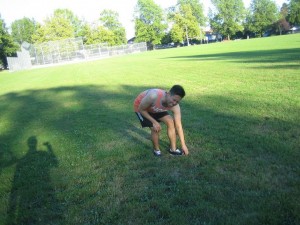Overview
Blisters form on the surface of the skin with watery liquid beneath it. Blisters can form when your skin is scorched by heat or by chafing against something.
Blisters from a Sunburn
If you are really unfortunate (or not cautious enough) you could get blisters forming on your skin.
Your body recognizes that your skin is burnt and directs fluid to help your skin start to recuperate.
Steps to Take

- Cool the area with cold water or a damp cloth.
- Do not rupture any blisters – it might become infected.
- Use a sunburn ointment, which will calm the burn.
- If you have a few blisters or your skin is very painful, then you must speak to your GP.
Friction Blisters
Blisters can also form when your skin rubs against something. They may form on your hands when you are working in the garden or you might get them when using a hockey stick, bat or tennis racquet. You might get them on your feet when your shoes chafe.
First Aid Steps
- Discontinue what you were doing that initially caused the blister.
- Don’t burst the blisters as they can become infected.
- Clean the area which is blistered for any germs.
- Cover with a dressing if you play a lot of sport.
- Find out what triggered the blister to form and see if you can prevent it from happening so that more blisters don’t start to form (e.g. your shoes might be too big – wear an extra pairs of socks so that your feet don’t chafe up and down).
- Cool the blister with cold running water (don’t place ice on your skin) and conceal with a protected dressing before you go to bed each night. That will help your blister from being chafed against the bed sheets.
What TO Do If A Blister Is Torn
- Rinse the area with water and some soap. Do not use iodine, alcohol, or any other detergent.
- Don’t get rid of the fold of skin over a blister except if it’s very unclean or torn or there is discharge underneath it. Lightly smooth the fold over the tender skin.
- Put an antibiotic cream and a fresh bandage. If the skin underneath the dressing begins to itch or a blotch develops, discontinue the ointment. The lotion might be causing a skin reaction.
- Alter the dressing every day or whenever it gets damp or dirty. Get rid of it at night to let the skin dry out.
